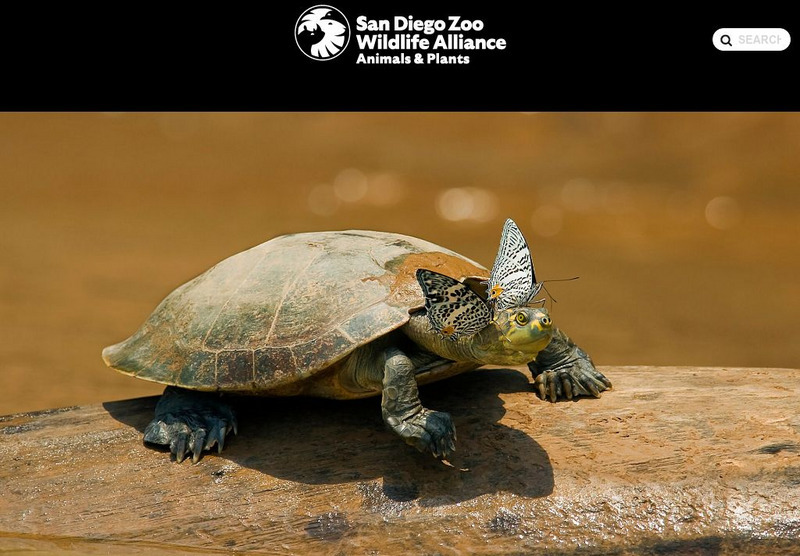Hi, what do you want to do?
Curated OER
Wonderful Whales
Primary marine biologists consider the largest living animals on Earth, the whales. Introduce them to general anatomy, unique adaptations, and behaviors. Teach them to sing a song that will help them remember some of these facts....
Sea World
Whales
A whale of a lesson is sure to intrigue your elementary oceanographers! Learn about the mammals of the sea with a series of activities about whales, dolphins, and porpoises. Kids complete worksheets about the anatomy of a whale, create a...
Curated OER
What Can a Leaf Be?
Students identify leaves for an art project and create a collage. In this leaf lesson, students review leaf characteristics. Students use leaves to create a collage of an animal or creature. Students write recipes of leaves for their...
Curated OER
Living Things Experience Diverse Life Cycles
Second graders will study and explain the meaning of growth, development, and life cycle. They describe how plants grow and develop and observe an animal to show how it grows, changes, and reproduces throughout its life.
Curated OER
Life Cycle
Third graders examine and compare the life cycles of a variety of different animals. They analyze photos of animals and discuss any unique body parts and why those parts function they way they do. Next, they observe mealworms and...
Curated OER
Dinosaur Skeletons
Students investigate the anatomy of a dinosaur, describe its skeleton, and arrange pretend bones using toothpicks, popsicle sticks, tongue depressors, and a variety of wooden beads.
Curated OER
Frog Dissection
Students explore the anatomy of frogs. They complete a frog dissection to complete an accompanying worksheet which includes questions, diagrams and pictures.
Curated OER
Animals in Motion
Students draw and sculpt animals in motion. For this artistic drawing lesson, students are introduced to art depicting arrested motion, then observe and sketch animals in motion and use the drawing as they create a balanced sculpture.
Curated OER
Amphibians-Frog Dissection
Students compare the anatomy of a fish to an amphibian and that of an amphibian (frog) to a human. They complete a virtual frog dissection to gain some experience prior to the real dissection.
Curated OER
Using a Dichotomous Key for Invertebrate Phyla
Students use a key to determine the phyla of invertebrates. They are broken into groups and each group gets a stack of pictures and uses the key to determine which phyla the animal belongs to. There are also individual questions for...
Curated OER
The World of Insects and Spiders
Students identify numerous insects and their body parts. In this insect life instructional activity, students practice using scientific vocabulary while comparing the different parts of spiders and insects. Students view...
Curated OER
Adaptations To the Environment
Middle schoolers design and construct an imaginary animal that is perfectly adapted to a particular type of biome. They give the animal a scientific name, place it in a phylum and write descriptions about its behavior, reproduction,...
California Academy of Science
Fish Forms
I've said it before, and I'll say it again, you can add art to any lesson! While little learners are discovering why fish have specific body parts such as, scales, fins, and gills, they start making three-dimensional fish forms. Children...
Curated OER
Arthropod Coloring
In this arthropod worksheet, high schoolers compare and contrast the different animals found in the Phylum Arthropoda: insects, arachnids, and crustaceans. Students complete 8 fill in the blank statements and color illustrations.
Curated OER
Cloudy With a Chance of Meatballs
Fourth graders participate in a play to work on seeing events from a different perspective. Some of them are reporters, some cameramen and women, and others are interviewed. They put themselves in the shoes of the people in the book...
Curated OER
Sea Horse Body Parts
Students complete a diagram of sea horse body parts. In this sea horse lesson, students review the story Sea Horses A True Book, complete a sea horse diagram using Internet sights to help, make new entries in their KWL charts and...
Curated OER
Vertebrate Dioramas
Students are able to describe the development of their chosen form of vertebrate life from the past to the present in a four to six page typed paper. They explain the use of phylogenetic tree. Students use the phylogenetic tree to...
Curated OER
Vertebrate Dioramas
Learners describe the development of their chosen form of vertebrate life from the past to the present in a four to six page paper. They explain the use of a phylogenetic tree, and use this to exemplify an organism's evolutionary change...
Curated OER
Capturing the Moment in 3-D
Students analyze the sculpture "Rearing Horse" by Adriaen de Vries. In this visual arts lesson, students examine the sculpture and then draw and sculpt animals from life, trying to capture a moment frozen in time.
Curated OER
Classification of Animals
Third graders practice classiyfying items and identify three major characteristics scientists use to classify animals. They describe the differences between ectothermic and endothermic animals.
Regents of the University of Michigan
Animal Diversity Web: Phylum Mollusca (Mollusks)
A great, detailed description of mollusks. Discusses parts of their external and internal anatomy and their functions, and lists several characteristics of mollusks. Tabbed pages include pictures, specimens and classification.
Other
Brain Connection: Your Brain Health Headquarters
A newsletter all about the brain including current research, anatomy and function of the brain, games, quizzes, and more. Animations and pictures make the site appealing to kids, and depth of content make it useful to parents and...
San Diego Zoo Global
San Diego Zoo: Turtle and Tortoise
This resource provides detailed information about turtles and tortoises, as well as several pictures and an audio clip.




























